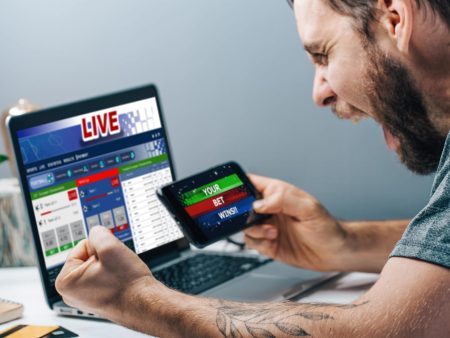
Moneyline betting represents the simplest type of sports wagering. Your objective is to correctly predict the outcome of a game. Although point spread betting dominates in football and basketball, moneyline betting is favored across most other major sports globally, such as baseball, hockey, soccer, boxing, MMA, and auto racing.
What Is a Moneyline Bet?
A moneyline bet is essentially a straightforward bet on who will win a game, with no point spread or any handicapping involved. You select the outright winner. Given that matchups are seldom perfectly balanced, odds are assigned to differentiate the favorite from the underdog. These odds balance the financial risk of betting on the favorite against the potential reward of betting on the underdog, introducing strategies for long-term success with moneyline bets.
How the Moneyline Operates
Choosing the outright winner might seem simple, but the odds designate a favorite and an underdog to balance the betting. For example, consider a Major League Baseball game where the Yankees host the Astros:
Houston Astros +120
New York Yankees -140
Here, a $100 wager on the underdog Astros would yield a $120 profit if they win. Conversely, a $140 bet on the favored Yankees would net a $100 profit. The odds typically indicate the Yankees are more likely to win, but an Astros victory would significantly boost your winnings.
How to Bet on the Moneyline
The concept behind betting the moneyline is straightforward: select the winner. While the main goal is to pick the team with the best chance to win, choosing the right underdogs can offer considerable value. Sometimes, betting on an underdog like the Astros is advisable, even if they have less than a 50% chance of winning, depending on the value presented by the odds.
Exploring the Two-Way Moneyline
In a two-way moneyline, you can bet on either the favorite or the underdog. If the event ends in a tie, leading to neither option winning, the bet is voided, and the stake is returned as a push. For instance, an NFL moneyline might be set as follows:
Dallas Cowboys -150
Green Bay Packers +130
Here, you would need to bet $150 on the Cowboys to win $100, while a $100 bet on the underdog Packers would return $130 if they manage an upset.
Understanding the Three-Way Moneyline
A three-way moneyline adds a third option to the standard two-way bet by including odds for a tie or draw. This type of moneyline is common in sports where draws are frequent, such as soccer or boxing. Consider a boxing match example:
Mayweather -400
McGregor +300
Draw +1200
In this scenario, betting on the draw means that if Mayweather and McGregor fight to a draw, a $100 bet on this outcome would pay out $1,200. Bets on either fighter would be lost if the match results in a draw. Conversely, if there is a decisive winner, only bets on that fighter pay out, and all bets on the draw are forfeited.
Betting on Underdogs vs. Favorites
When analyzing moneyline odds, it’s straightforward to determine which team is favored and which is the underdog. Favorites are indicated with a negative number, while underdogs have a positive number. Consider the College Football Playoff odds for the championship game:
Clemson Tigers +180
LSU Tigers -220
In this example, LSU is the betting favorite, requiring a $220 bet to win $100 on their victory. Conversely, a $100 wager on Clemson, the underdog, would yield a $180 profit. This higher potential return reflects their lower likelihood of winning, according to sports betting sites.
Finding Value in Underdogs
Not every favorite is guaranteed to win. One key strategy is to assess the game independently of the odds. If your analysis suggests a close contest, yet the underdog is listed at +150, this could be an excellent opportunity to support a significant underdog.
Similarly, not all favorites are equally reliable. Betting on strong favorites might seem secure, but a single loss can devastate your bankroll. For instance, a loss on a favorite at -200 means you need two other wins on even bets just to break even.
Risks and Rewards with Huge Underdogs
While betting on substantial underdogs might occasionally lead to surprising upsets, these bets are generally riskier—teams listed at +200 are deemed to have only a 33.3% chance of winning. However, moderate underdogs have historically paid off. For instance, MLB underdog teams priced between +120 and +170 have won 46% of the time over the past decade, often yielding a profit for their backers.
Moneylines vs. Point Spreads
The primary difference between betting on the moneyline and the point spread is straightforward: moneyline betting involves selecting a winner with varying odds for each team, while point spread betting involves selecting a team to win against a set number of points assigned by the sportsbook.
In point spread betting, the sportsbook sets a spread aimed at equalizing bets on both sides, typically at odds of -110, ensuring a profit through the vigorish or juice. On the other hand, moneyline odds are designed under the assumption that most bets will favor the favorite, with the underdog odds compensating for potential losses.
Consider an NFL matchup:
Point Spread:
New England Patriots -6.5 (-110)
Las Vegas Raiders +6.5 (-110)
Moneyline:
New England Patriots -180
Las Vegas Raiders +150
Here, the moneyline reflects heavier betting on the Patriots as substantial favorites. The even odds against the spread suggest a different dynamic; betting on the Patriots not only requires them to win but to do so by more than a touchdown.
If you’re confident the Patriots will win but unsure about the spread, a moneyline bet might be more appealing, balancing risk and reward.
Is Moneyline Shopping Worth It?
Shopping for better moneyline odds is crucial and can be highly beneficial, particularly because moneyline odds can vary more significantly than point spreads across different sportsbooks. For example, finding the Vegas Golden Knights at -140 at one book and -150 at another could save you money in the long run, minimizing potential losses.
Similarly, if you favor the New York Mets as an underdog and they are +125 at one site and +140 at another, choosing the higher odds increases your potential payout by $15 on a $100 bet. Over a season, these differences can accumulate, enhancing your overall betting success.
Handicapping Moneyline Bets
While selecting a winner might seem simpler than handicapping point spreads, the real challenge in moneyline betting lies in understanding and finding value. Not every favorite is worth the bet, and some underdogs offer significant value based on their odds.
Developing a Strategy for Handicapping Moneyline Bets
To effectively handicap moneyline bets, follow this structured approach:
- Assess the Odds: Begin by examining whether the odds between the two teams are close or if there’s a clear favorite or underdog.
- Analyze the Teams: Consider recent performance, head-to-head matchups, and key factors like injuries or strengths versus weaknesses.
- Evaluate Key Players and Stats: In sports like baseball, focus on the starting pitcher’s matchup against the opposing lineup. In hockey, consider the impact of the goaltender, who can be pivotal.
- Consider Home and Away Records: Determine if one team performs significantly better at home or struggles on the road. Historical results between the teams, especially in sports like soccer and hockey, can provide additional insights.
This process might be overwhelming initially, but with practice and refinement, your ability to make informed decisions will improve. Incorporating or removing various stats and trends will further enhance your handicapping skills over time.
Final Thoughts
Moneyline betting focuses purely on picking the winner, contrasting with point spreads that balance the odds by adjusting the scoring margin. This straightforward approach not only simplifies betting but also opens up opportunities to capitalize on underdogs for higher returns or favorites for increased win probabilities.
Moneyline Betting FAQ
What does a +200 moneyline mean?
A +200 moneyline indicates that the team is an underdog. This odds setting means a $100 bet would return $200 in profit if the underdog wins, reflecting a significant payout.
How does a moneyline payout?
Moneyline odds are typically based on a $100 wager. Favorites are listed with negative numbers (e.g., -150), meaning you’d need to bet $150 to win $100. Underdogs have positive numbers (e.g., +150), where a $100 bet would net $150 in profit.
Why might I see fractions or decimals on the moneyline?
Fractional and decimal formats are commonly used for displaying odds outside North America. Many sportsbooks offer options to toggle how odds are displayed, allowing bettors to view them in the format they find most intuitive. Our betting odds calculator can help convert these odds and calculate potential payouts.
What is a moneyline parlay?
A moneyline parlay involves combining multiple picks into a single bet for increased odds. This strategy is often used to enhance payouts when picking favorites. To understand the potential returns from various combinations, utilize tools like a parlay calculator to determine the value of each potential parlay.







